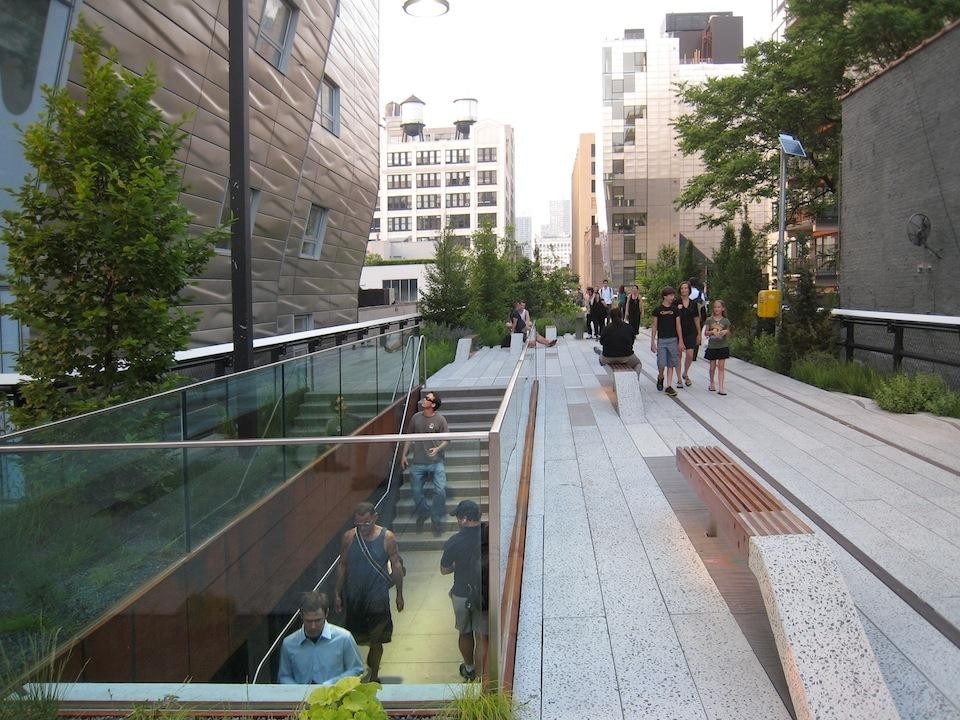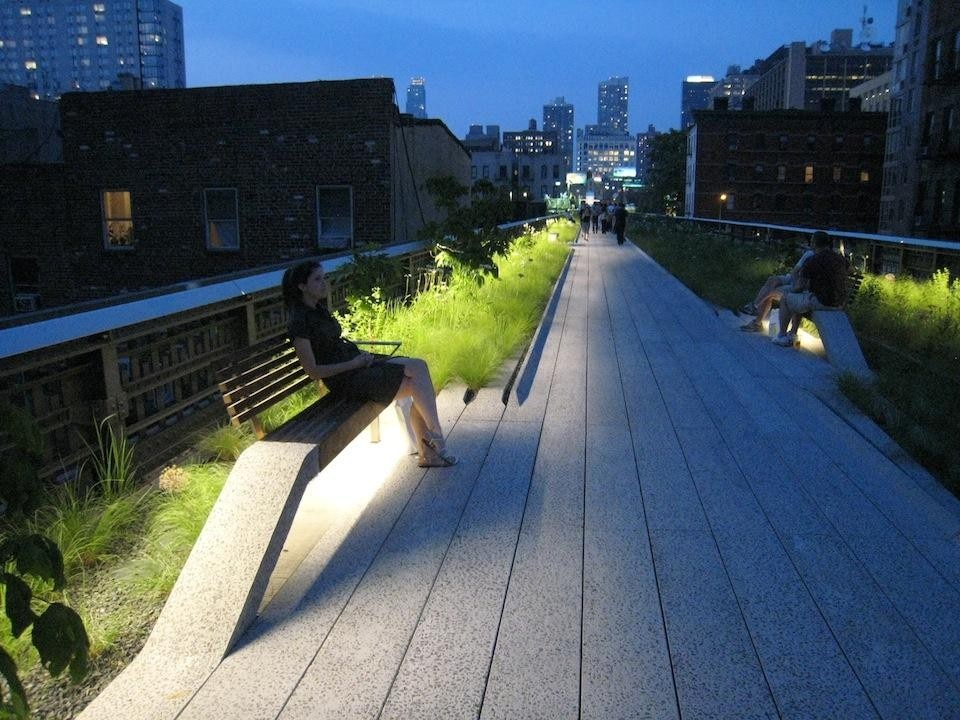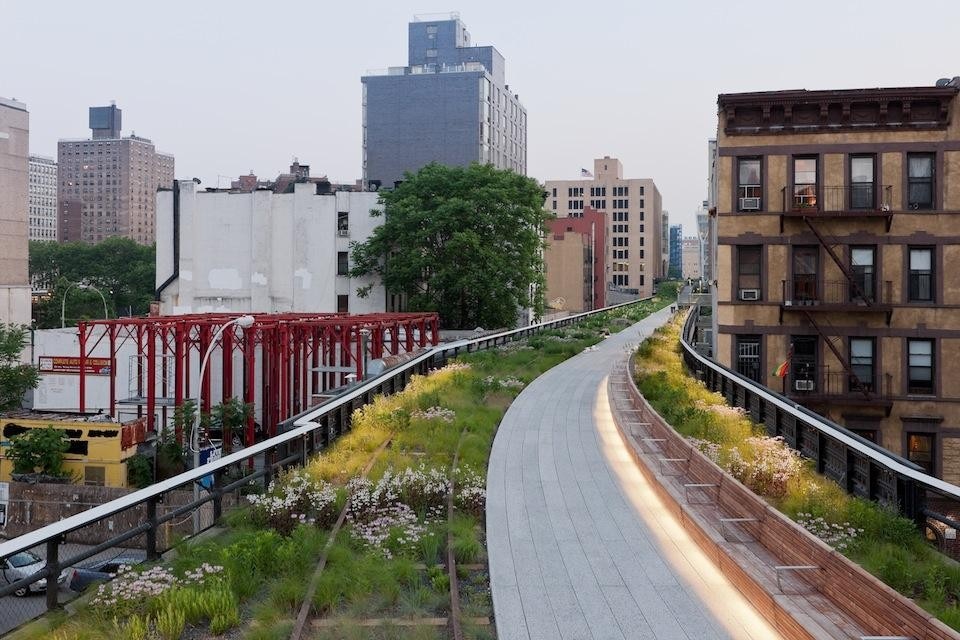Separated by a chicken-wire fence until this week, the first and second sections of the elevated park now blur seamlessly. Completed two years apart, they were designed as a whole. Hence the newly opened run between West 20th Street and West 30th Street is not a sequel, but the realization of the original vision. The now-familiar material palette and building components include concrete decking planks interlaced with greenery, wood benches sprouting out of the ground, cut-out stairwells with clear glass and Corten steel trim, wild and shaggy plantings, preserved iron tracks, and of course the hulking black steel structure built in 1934. Throughout the project, hard and soft elements are spliced artfully together.
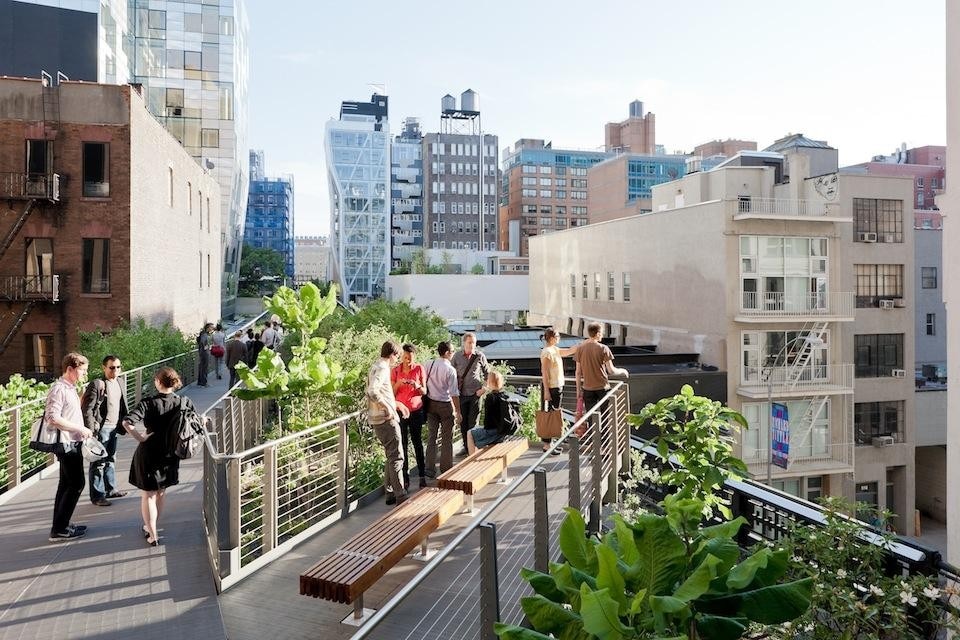
Top image: Looking south from near the northern terminus, a long wooden bench curves with the pathway for an entire city block. © Iwan Baan, 2011.
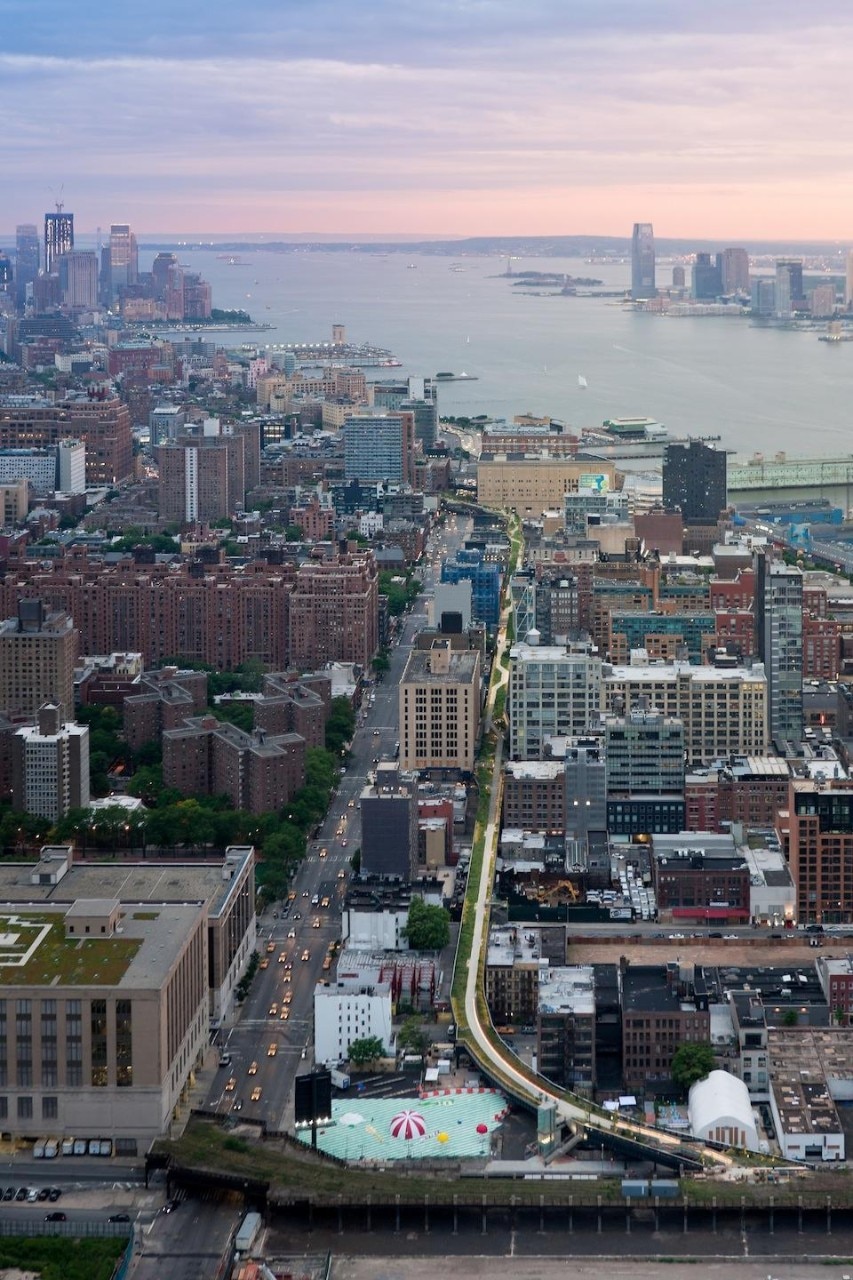
The park extends the city’s multi-layered density that Rem Koolhaas called, “the culture of congestion.” The High Line is no antidote to city life; on the contrary, it fuels city life.
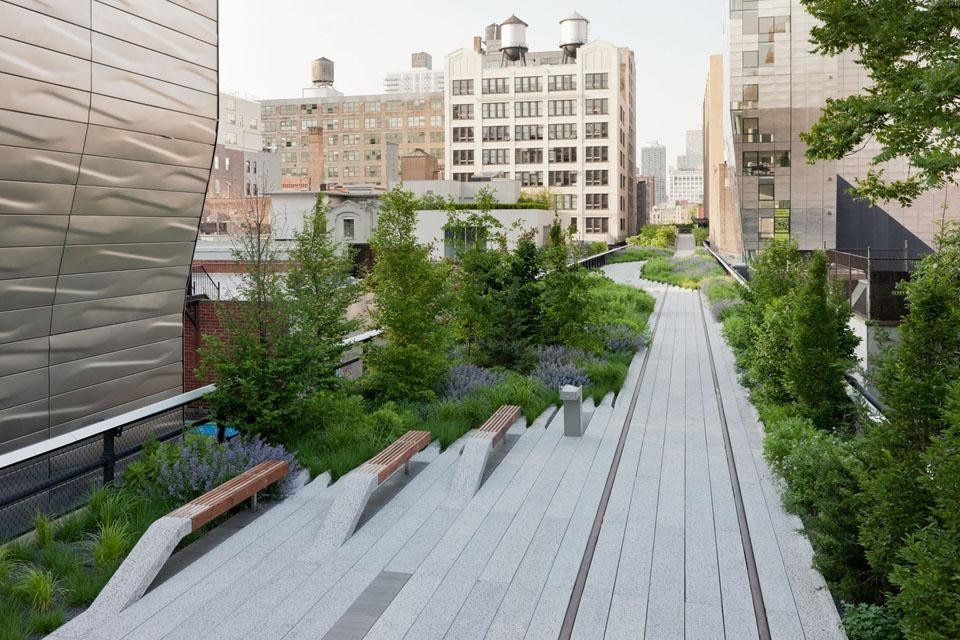
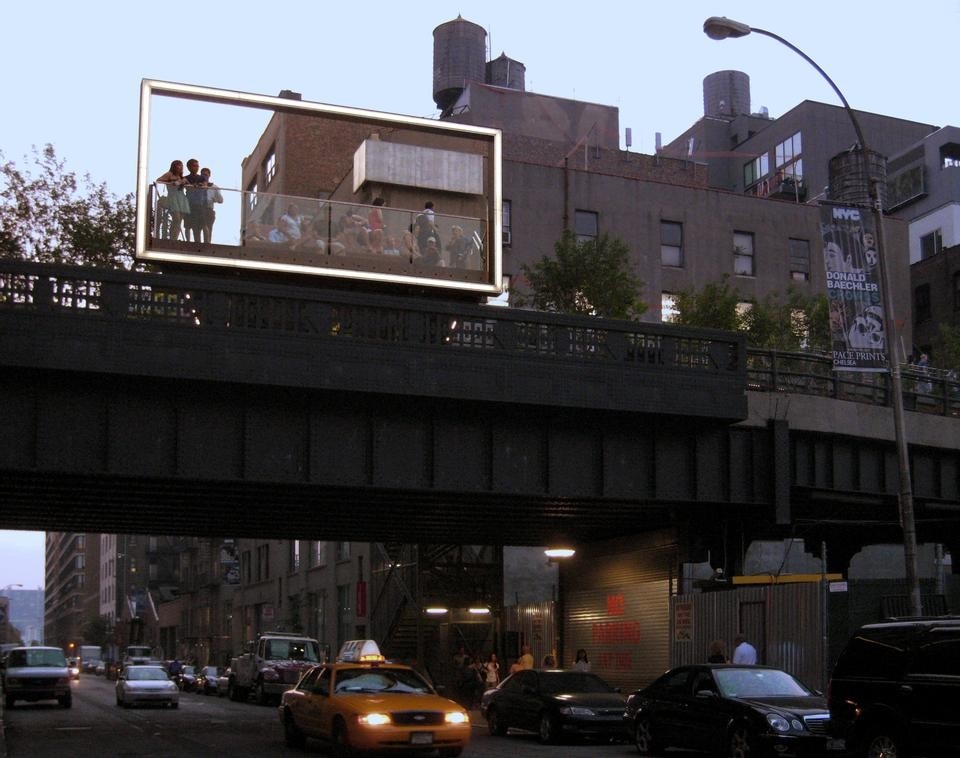
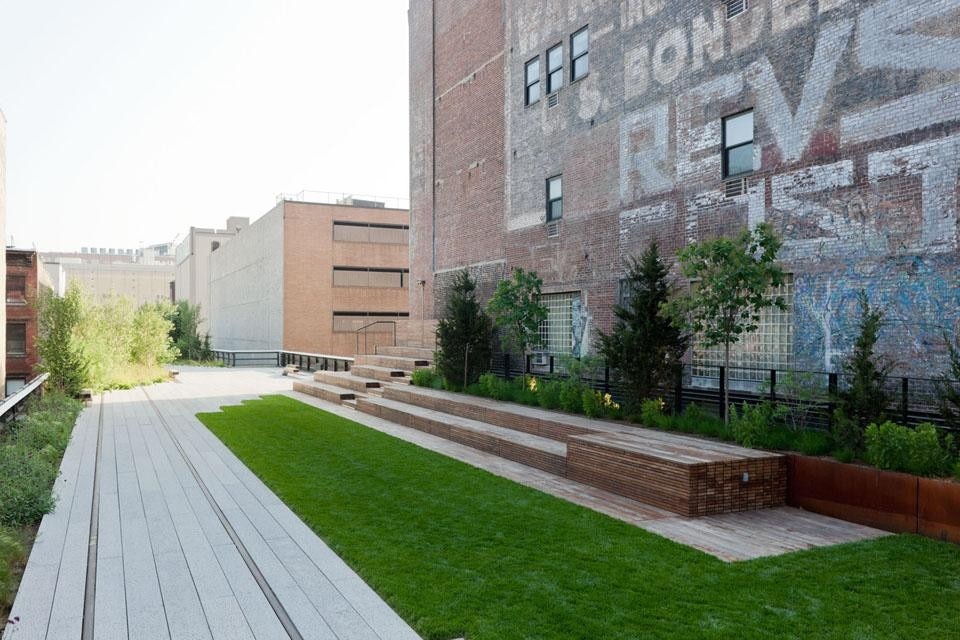
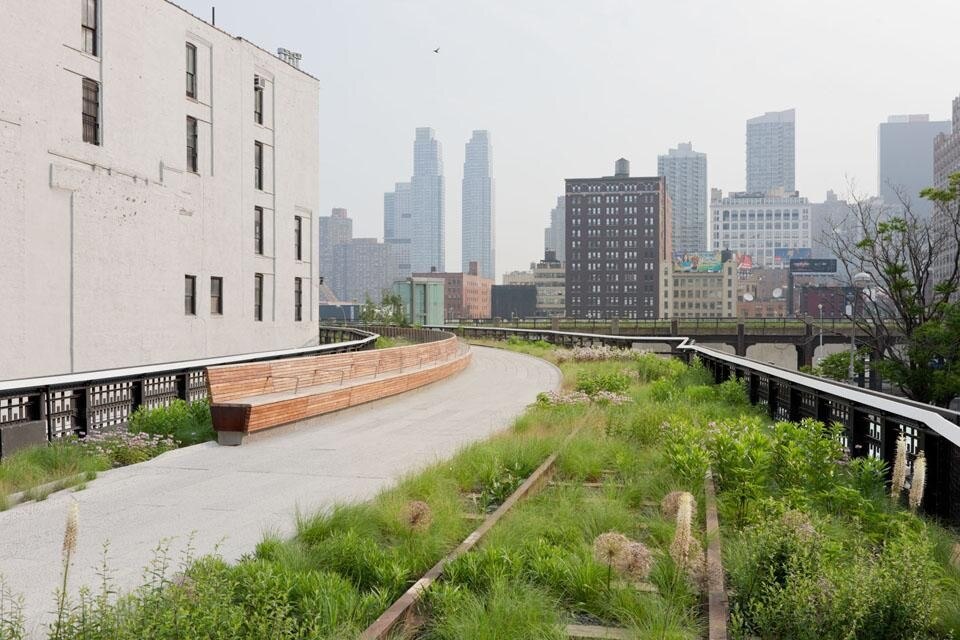
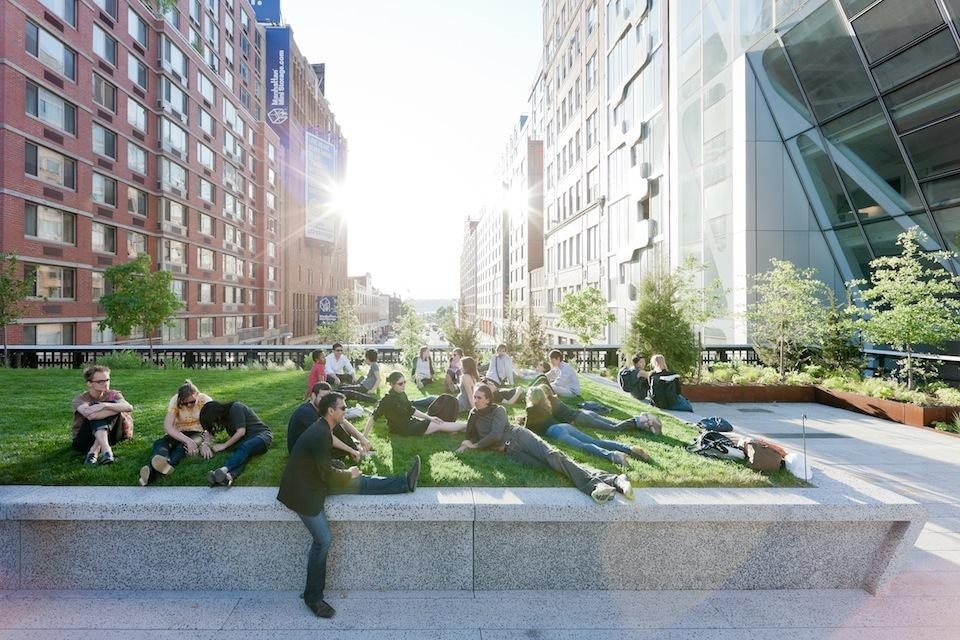
Gideon Fink Shapiro
